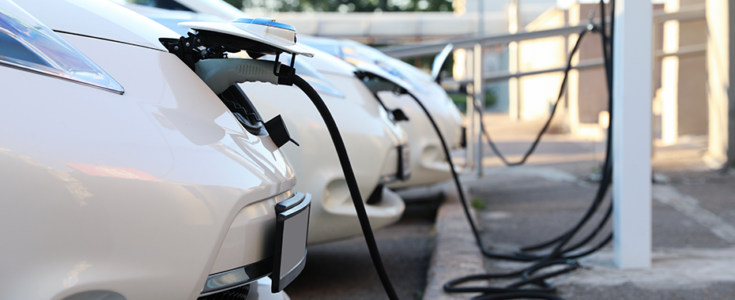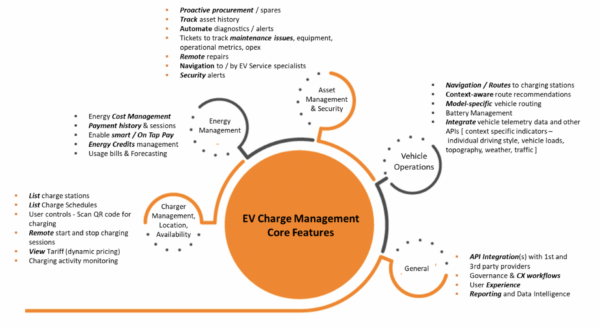
Electric Vehicle Charging Stations: Improving User Experience to Drive Adoption

Climate change is already wreaking havoc on our world. With this comes the necessity to move towards sustainable methods of development; for instance, using environmentally friendly products and encouraging the usage of non-conventional sources of energy. Electric vehicles (EV) are slowly gaining popularity among consumers and manufacturers as they have lower emissions and reduce dependency on fossil fuels. With the increase in adoption of electric vehicles comes the rise of the electrical vehicle charging station market.
Leading brand manufacturers for electric vehicles are now investing heavily in EV charging infrastructure. Along with this, they are also spending capital on R&D for faster and more efficient methods of charging. While many consumers install charging devices in their homes and residential complexes, there has also been an increase in demand for public charge stations worldwide. This has opened doors for several B2B service providers to empower fleet operations by setting up EV charge infrastructure and providing it as a service with a flexible engagement model. Improving the user experience of EV charging stations would be a great help in overcoming challenges of the emerging market.
What are EV Charge Stations?
Electric vehicle charge stations are like gas stations where the energy/power of the vehicle can be recharged by connecting the EV to the source of electricity. There are several gas stations which are working towards enabling electric charge along with the already existing choice of gas.
There are primarily three kinds of charge stations currently:
Type 1: These types of chargers are single-phase plug and range in output of 1kW – 7.5kW. They are the regular wall outlets, like where we plug our phones in for charging. Hence, they charge slowly, taking up to 20 hours to fully charge an EV. Having said that, it could still be good for EVs with smaller battery packs
Type 2: These types are 5-7 times faster than Type 1 chargers as they deliver up to 240 volts of power. Due to their increased power output, they need a different kind of plug called SAE J1772 to connect. Many EVs that are being sold today come with the connected package
Type 3: These types are the fast-charging kinds that use DC energy. They use three diverse kinds of connector plugs: SAE Combo, Tesla, and HAdeMO connector
There has been an increase in demand for EV. It’s predicted that by 2030 there would be approximately 200 million EVs on the road. This leads to the requirement of infrastructure services not only for residential areas, but also for offices and workspaces, malls and hotels, and fleet organizations.
More organizations are moving towards a sustainable environment and reducing their carbon footprint. These companies have already started enabling electric charge points in their office parking spaces. The charge station solution providers have come up to provide end-to-end services from captive charge stations to maintenance for any kind of EV (cars, buses, trucks, etc.). There are also several app-based services now, which supply real-time information on the nearest charge station, slot availability at the station, notification, and integrated payment system.
What are the Challenges in the Implementation?
While there are several government initiatives to promote the shift from fossil generated power to renewable energy, there are still obstacles in the adoption of EVs. Per a survey done in 2021, EVs have accounted for only 7.2% of global car sales. Here are some of the issues we face:
- Charging infrastructure and battery – To be able to support the growing demand of the EVs on road, there should not only be enough charge stations, but faster charging stations. Though, more car manufacturers are investing in innovation for powerful and less expensive batteries. On an average, EVs can run for approximately 330Km on a full charge (this may vary with the usage of other electric powered features of the car like heating/cooling, etc.)
- Grid infrastructure – With the increase in the existing situation of intermittent energy supply, there arises a need for new investments in the grid infrastructure as well to support the increased energy load
- Regulations and policies – In order to set up a charging station, the service provider must go through the local government authorities and utility providers. The process of convincing and approval takes time. Hence, there is a dependency on the local state norms for both public and home energy systems for incorporating EVs
- People and mind set – For any consumer-based innovation, a huge data set is needed to improve the consumer experience. Since there is an exceedingly small concentration of EV users, there is currently insufficient data available to analyze how EV users understand and use their vehicles
- Renewable energy – Powering the EV with solar panels is a potential choice. However, solar powered stations will occupy a lot of space. The energy generated from the solar panels could be stored in batteries and can help public charge stations instead of energy generated instantaneously. But the lack of renewable energy infrastructure leads to load demand on the grids
Pivoting Towards Sustainability and Global Mind shift
For a shift from combustion engines to EVs, one needs to understand the benefits of the latter not only with respect to energy efficiency but also the impact on the environment, the national benefits, and impact on economic development. But it doesn’t stop at that, one must further incorporate those changes into the day-to-day activities to be able to make a change.
- Economic Benefits
Economic benefits are derived from the initiatives focused on long term impacts while ensuring businesses growth. One such impact is that an increase in the demand for EVs has led to an increase in the job opportunities for setting up the EV infrastructure. There are several initiatives to understand at a state level the potential economic benefit this will make and help society. The government has also been playing a crucial role in setting aside funds for the electrification and infrastructure development. Another major benefit is derived from the fact that EVs are cheaper to run as the cost of fuel is higher than electricity so it will add to the savings of the EV owners.
- Environmental Benefits
Environmental benefits are derived out of the initiatives that help with carbon footprint reduction throughout the business value chain. With a shift to EVs with no tailpipe emissions, there is significant improvement in the air quality which is free from contaminants like nitrogen oxide to fine particulate matters. The adverse impacts of climate change are noticeably clear with rising sea levels, droughts, hurricanes, etc. With a small step like using renewable energy source and conserving water and natural resources, a wholesale shift to EV for private as well and public transport systems would go a long way in mitigating the potential damage.
- Social Benefits
Social benefits are derived from those initiatives that target the safety and health of employees, customers, and communities. The EV charge stations can also be part of a community microgrid and help during grid emergencies. What this means is that the EV stations can act as storage houses for energy generated from solar and abundant wind. They can then be used in case of a power outage where the EV stations give that renewable and clean energy back to the grids.
EV Charging Experience – Make it Better and More Fun
If EV charging can be turned into a user experience that makes our lives better and more fun, it will be a lot easier to sell electric cars. The ideal situation of anyone buying an EV is that they have a private garage at home where it can be charged. While it reduces anxiety of fuel shortage, it is going to be quite difficult in many urban environments.
Depending on public charging is very difficult. There are some clear pain points that are seen in the EV charging user experience including charger availability, how long it takes to charge, proximity of chargers, payments and more. Adding to it are the worn and broken cables with no maintenance, the number of network cards, and access blockage to name a few.
All these issues make the charging experience problematic and can really detract from the pleasure of EV ownership. It’s time to bring CX into focus while rolling out charging networks across various locations. Automated monitoring networks, clean charging stations, and anticipating customer needs before the complaints arrive are a few of the foundational technologies to be laid out. With increasingly charging stations rolled out, experience also must be acceptable.
Outlined are 6 ways EV charging networks can improve the charging experience for users:
- Easy discoverability of the charging station
- Reduce payment friction and accept credit cards across charging networks
- Adopt a standard charger to cater to all target segments
- Lighter and more ergonomic charging station designs to support Baby Boomers
- Educate and entertain- With a captive audience waiting for 30 minutes or more during a charge, there’s an opportunity to set up free commercial entertainment as an added bonus to the EV owners
- Zero downtime with proactive alerts and automated monitoring activities with auto remediations built in
How Apexon Can Help e-Mobility Service Providers and Charging Station Manufacturers
Apexon is empowering some of the world’s leading automotive and industrial firms to embrace industry 4.0 with distinct digital capabilities. With electric mobility changing the world we live in, we see there is a growing demand for charging and the usage frequency is growing by the day. It is critical that charging stations be monitored and managed with seamless user experience for more electric vehicle adoption.
We propose a custom solution that helps e-Mobility service providers and manufacturers with the following 5 core features to manage their day-to-day operations.

Key Benefits include:
- Real time visibility and monitoring of operations with proactive and predictive alerts
- Seamless user experience for fleet owners, EV drivers, and eMobility service providers
- Dynamic EV charging load management
- Actionable reporting and data insights
- Accelerated integration and development with Apexon accelerators and expertise setting up for other automobile customers including 3rd party charging networks
Our solutions help clients leverage the opportunities of supply chain 4.0 by incorporating CX, data, and digital engineering. As a result, the systems allow organizations to react quickly, improving both company performance and customer satisfaction. In addition, this digitally connected ecosystem and real-time visibility assists in removing silos across the supply chain function, resulting in lower costs, smaller inventories, and fewer lost sales.
This blog was cowritten by Priyanka Prasad and Geetha Iyer
Also read: EV Charging Infrastructure Startups: Navigating Challenges and Unlocking Opportunities